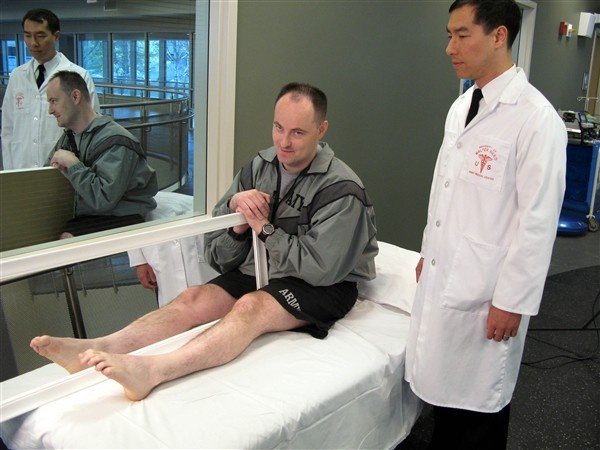How Does Mirror Therapy Relieve Phantom Pain?

Many studies have shown mirror therapy to be effective in relieving phantom limb pain. However, the mechanism of how it works exactly is still unclear with a number of different theories.
The first theory was proposed by Ramachandran, who invented mirror therapy for phantom pain. He stated that phantom pain is felt as a result of a tensed phantom limb. He stated that because the limbs are not under voluntary control, they cannot become unclenched which is why the pain persists.
The phantom limb feels paralyzed because there is no feedback to the brain telling the brain it is not. Ramachandran and Rogers-Ramachandran believed that if the brain received visual feedback that the limb had moved, then the phantom limb would become unparalysed.
Using mirror therapy for phantom pain allows you to receive visual feedback that the phantom limb is relaxing and moving and therefore offers phantom pain relief. The visual information received by the brain overpowers the proprioceptive information and thus allows the brain to think the limb is moving. This is because the brain prioritises visual feedback over other senses. This model helps describe how mirror therapy can provide immediate pain relief for some patients with phantom limb pain as soon as they are able to move or unclench the limb.
Some other theories provide evidence for the long-term effects of phantom limb pain treatment with a mirror. It has been shown in amputees that pain is associated with reorganization of the primary sensory cortex contralateral to the amputated limb. Studies have found that the area where the hand would normally be represented in the brain shrinks, and is overtaken by representation for the face.
The degree of this reorganization correlates with the amount of pain experiences. A following study led by the same researcher found that reorganisation is partially reversed using mirror therapy and this corresponds with a reduction in pain. This would support the idea that using mirror therapy helps “rewire” the brain back to its normal state which helps decrease pain long term.
Harris (2000) suggested that phantom pain is caused by the discrepancy between what the brain is being told by the different senses. If the visual feedback from the mirror box matches the perception in the brain that the limb is there it may help reduce the pain.
Phantom pain mirror management allows you to independently manage your own pain. This improved control over the pain has been shown to increase self-efficacy and decrease anxiety. Mood is a strong factor in pain and normally if one improves, so does the other. The fact that phantom limb pain treatment with a mirror therapy can do both makes it a very effective technique.
Purchase the Mirror Therapy Box Rehab Kit For Phantom Limb Pain Here.